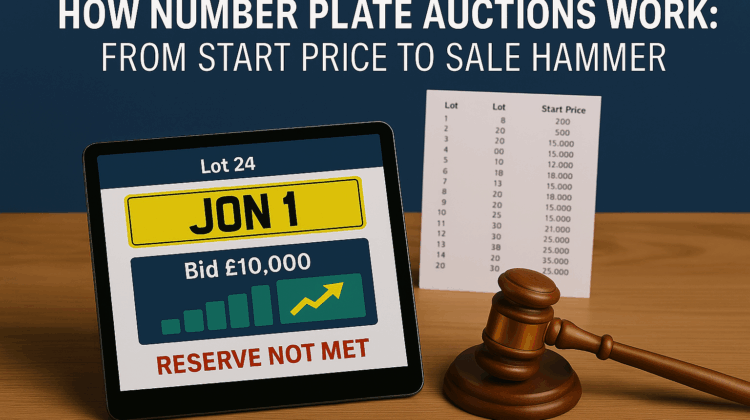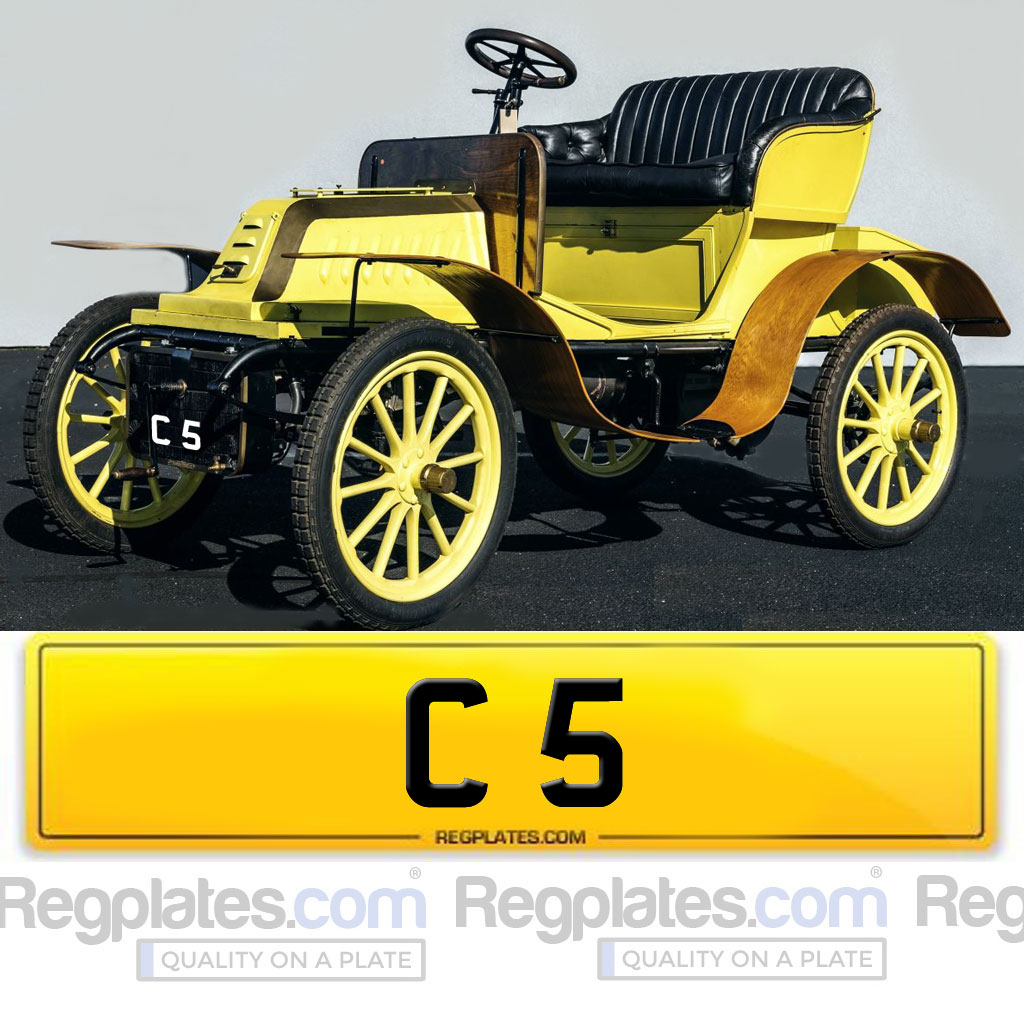
Introduction: The Allure of Number Plate Auctions
Personalised number plates have long been a badge of individuality, prestige, and sometimes playful humour on UK roads. For buyers seeking the perfect registration—whether it’s “1 JC” for personal branding or “80 XER” for show-stopping flair—auctions remain a thrilling gateway to owning rare and coveted plates. But how do these auctions actually work? From initial pricing to the hammer drop, this guide reveals the behind-the-scenes workings of number plate auctions in the UK.
What Is a Number Plate Auction?
A number plate auction is a public or online sale event where private or DVLA-issued registration plates are offered to the highest bidder. These auctions are run by various providers, including:
- DVLA Personalised Registrations: The official source for new plate combinations.
- Auction Houses (e.g. Bonhams, Silverstone): Often handling historic or ultra-premium plates.
- Online Platforms (e.g. Regplates.com, eBay): Where private sellers offer plates directly to buyers.
Unlike standard retail listings, auctions offer dynamic pricing, competitive bidding, and the chance to acquire truly one-of-a-kind registrations.
Reserve Price vs. Start Price: Know the Difference
Every auction begins with pricing strategy. Here’s a breakdown:
- Start Price: The initial bid amount—this can be low to encourage interest (e.g. £100) or reflective of market demand.
- Reserve Price: The minimum acceptable sale price set by the seller. If bidding doesn’t reach this amount, the plate isn’t sold.
At DVLA auctions, start prices are often modest (£250–£500) to attract broad interest. However, prestigious plates might come with high reserves to reflect value—think “VIP 1” or “RR 1.”
How the Auction Process Works
Step 1: Auction Listing
Each plate is listed with:
- A detailed description and valuation
- Image mock-up of the plate
- Auction date, format (physical or online), and terms
- VAT and DVLA assignment fees if applicable
Sellers—whether DVLA or private owners—submit documentation proving legal ownership and transfer eligibility.
Step 2: Bidding Begins
Bidding formats may vary:
- Live Auctions: In-person events with an auctioneer calling bids.
- Online Timed Auctions: Virtual platforms where bids are placed over days or hours.
- Hybrid Auctions: Mix of online and live formats.
During bidding:
- Interested buyers compete by incrementally increasing offers.
- Some auctions allow proxy bidding, where buyers set a max bid in advance.
Step 3: The Sale Hammer Falls
When bidding closes, the auctioneer (or system) announces the winning bid with the metaphorical “hammer drop.” If the final bid meets or exceeds the reserve, the plate is sold. If not, the seller retains ownership or may negotiate post-auction.
Winning bidders typically receive:
- Confirmation of sale
- Instructions for plate assignment or retention
- Payment terms (usually within 3–5 business days)
Legalities and Logistics
After the sale, there’s a formal process to assign the plate:
- Assignment to a Vehicle: Requires V5C logbook, MOT certificate, and insurance.
- Retention Certificate: If the buyer isn’t ready to assign, the plate can be held on a DVLA certificate for up to 10 years.
Fees involved include:
- DVLA assignment or retention fee: £80
- VAT if applicable (especially on DVLA-issued plates)
Buyers should verify:
- Plate legality (no offensive or misleading formats)
- Compatibility with UK registration rules
Pricing Trends and Investment Value
Auction prices vary dramatically depending on:
| Factor | Impact on Value |
| Length of Plate | Short plates like “A 1” command premiums |
| Character Combination | Names, initials, words add desirability |
| Historic Ownership | Plates linked to celebrities or brands |
| Rarity & Age | Older registrations often fetch more |
For example, “25 O” reportedly sold for £518,000, making it one of the UK’s priciest plates. Even more modest combinations like “BLA 1” or “REG 777” have seen strong performance over time.
Investors often scout auctions to diversify portfolios, with certain plates appreciating significantly based on automotive trends or cultural relevance.
Why Buy via Auction vs Private Sale?
| Auction Benefit | Why It Matters |
| Competitive Pricing | Potential for below-retail deals |
| Plate Rarity | Auctions often feature exclusive plates |
| Secure Transactions | Professional oversight and DVLA guidance |
| Excitement Factor | Live bidding adds drama and engagement |
While private sales offer flexibility and direct negotiation, auctions provide access to plates not found elsewhere—and a structured, transparent buying experience.
Tips for First-Time Bidders
If you’re new to plate auctions, keep these pointers in mind:
- Set a budget: Don’t get caught in a bidding war without limits.
- Research plate history: Does the plate have past owners or public value?
- Understand fees: Account for VAT, assignment costs, and auction charges.
- Verify eligibility: Make sure your vehicle can receive the plate.
And most importantly—use a trusted platform like Regplates.com to track upcoming auctions, register interest, and get expert advice before placing a bid.
Upcoming Auction Highlights
Regplates.com regularly curates and lists high-interest plates available through DVLA and private auctions. Watch for popular formats such as:
- Single-digit suffix plates (e.g. “J 7”)
- Name and business-related registrations
- Lucky number combinations (e.g. “88 R” or “777 X”)
Stay tuned to Regplates for:
- Live auction coverage
- Pre-sale valuations
- Assignment support
From Start to Sold
Number plate auctions offer more than just a transaction—they’re an experience. Whether you’re a collector, business owner, or first-time buyer, understanding the journey from start price to sale hammer is key to a successful and satisfying purchase.
With Regplates.com as your number plate auction partner, you’re not just buying a number plate—you’re claiming a piece of automotive identity.

Jon Cherry is a Director of leading personalised number plate dealer Regplates.com. Jon has over 25 years industry experience handling some of the most expensive plates ever sold with many high profile and celebrity clients. Active since 1991 in the number plate industry, Jon is currently Chairman of the Cherished Numbers Guild, a trade body representing number plate dealers in the UK. Jon has written many articles on the industry and insight into the future of numberplates and the market as a whole.




